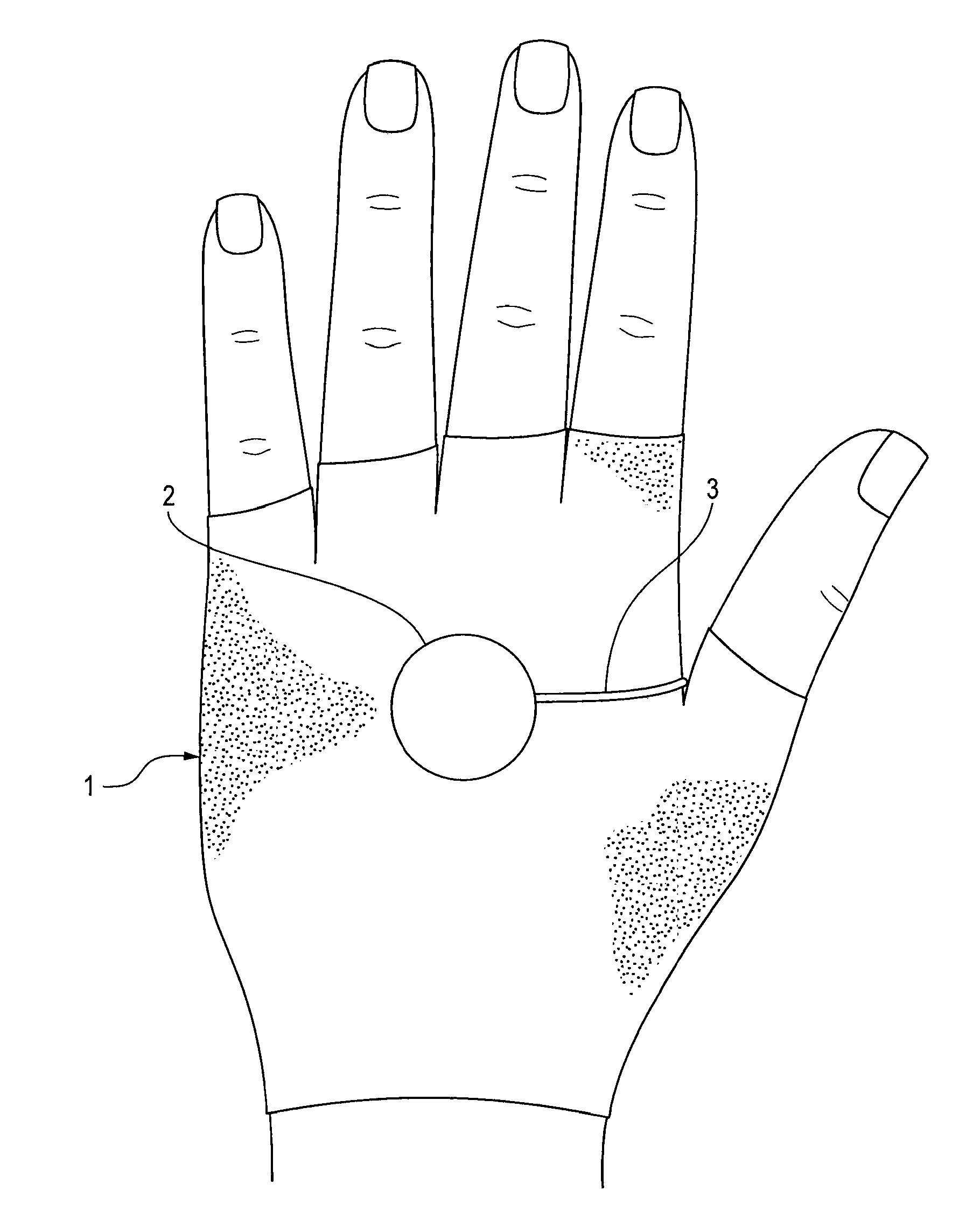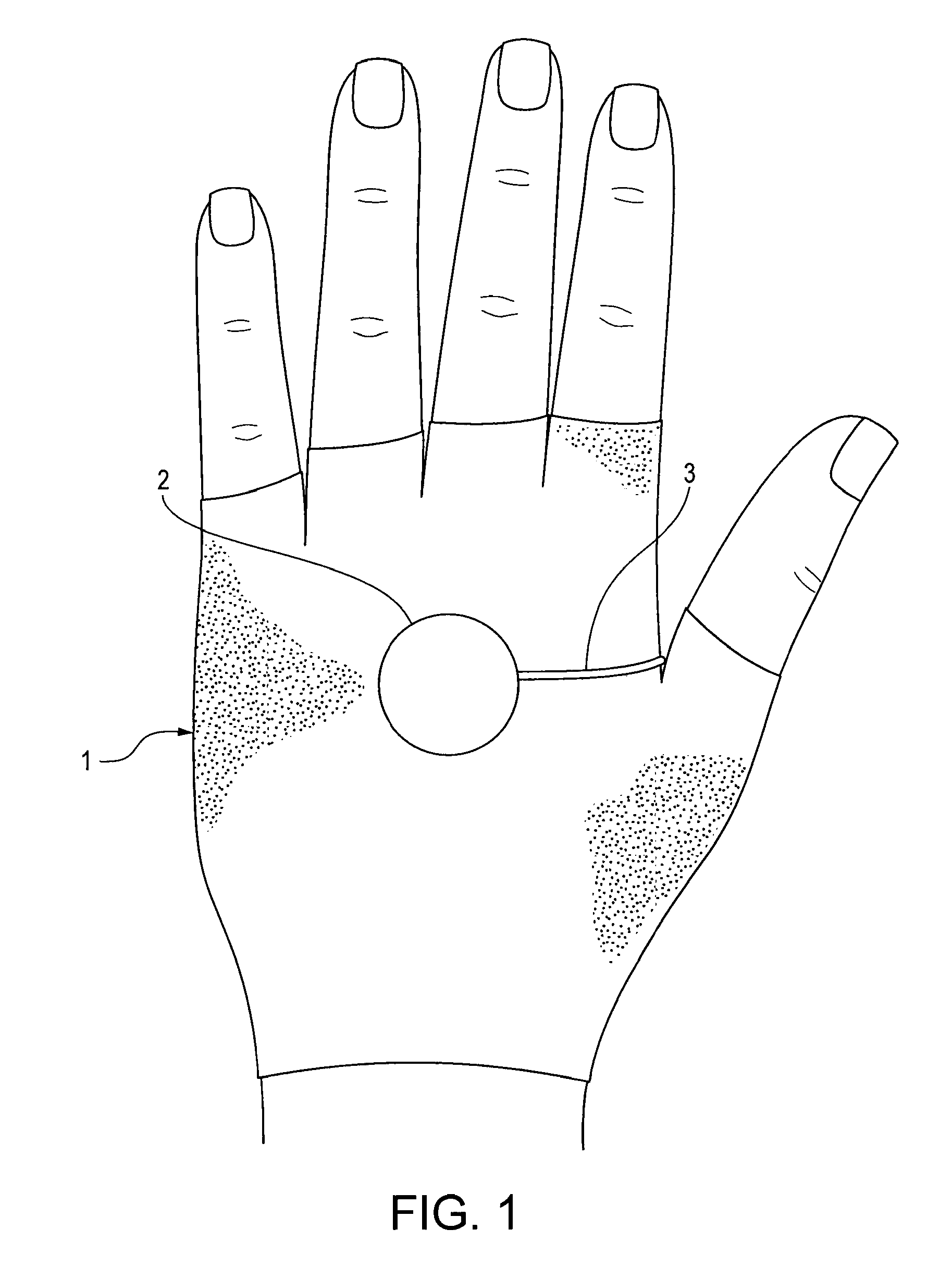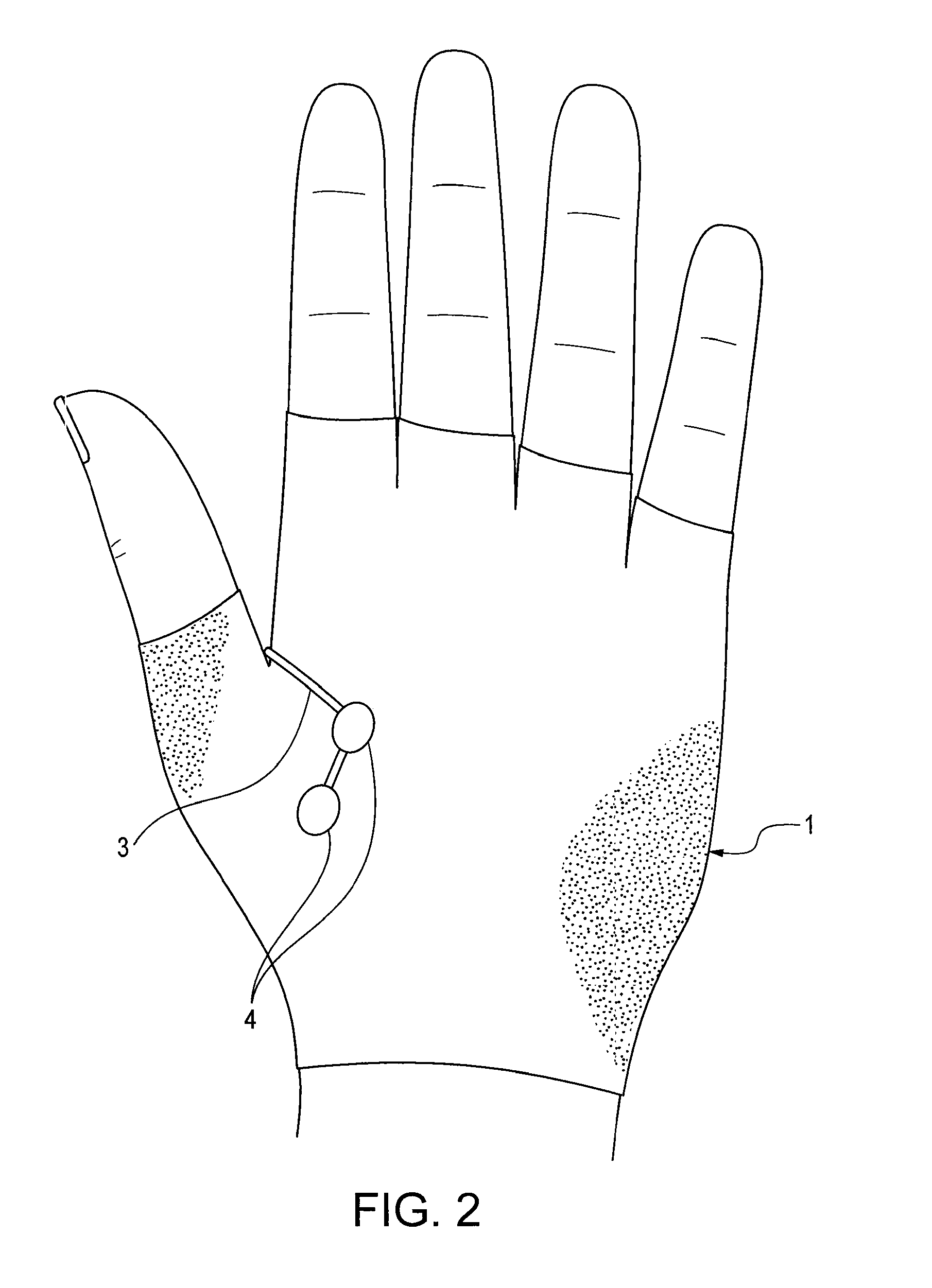Sensors for detecting acute stroke and method of using same
a sensor and stroke technology, applied in the field of sensors, can solve the problems of significant disability, hospitalization, health care cost, and patients cannot be treated until, and avoid the development of ischemic cerebral emboli in the absence of a patient, so as to avoid the development of ischemic cerebral emboli, the effect of reducing the risk of strok
- Summary
- Abstract
- Description
- Claims
- Application Information
AI Technical Summary
Benefits of technology
Problems solved by technology
Method used
Image
Examples
Embodiment Construction
[0016]Unilateral arm paralysis is the most common manifestation of stroke. When a stroke occurs during sleep, there is cessation of the spontaneous and repeated electrical activity of muscles that occurs at frequent intervals. An object of embodiments of the present invention is to detect this cessation of electrical and muscle activity that takes place as soon as a stroke occurs and implement an automatic alarm system that will permit a curative intervention. This can be accomplished by detecting the absence of this periodic electrical and muscular activity transcutaneously by means of, for example, electromyography (EMG) electrodes. In one embodiment shown in FIGS. 1 and 2, the cessation of electrical and muscle activity can be detected in the area of the hand that has the most musculature (the thenar eminence at the base of the thumb). In this embodiment, the electromyography electrodes (e.g., sensors 4 of FIGS. 1 and 2) will be attached to a glove 1 (e.g., the inner surface) to ...
PUM
 Login to View More
Login to View More Abstract
Description
Claims
Application Information
 Login to View More
Login to View More - R&D
- Intellectual Property
- Life Sciences
- Materials
- Tech Scout
- Unparalleled Data Quality
- Higher Quality Content
- 60% Fewer Hallucinations
Browse by: Latest US Patents, China's latest patents, Technical Efficacy Thesaurus, Application Domain, Technology Topic, Popular Technical Reports.
© 2025 PatSnap. All rights reserved.Legal|Privacy policy|Modern Slavery Act Transparency Statement|Sitemap|About US| Contact US: help@patsnap.com



